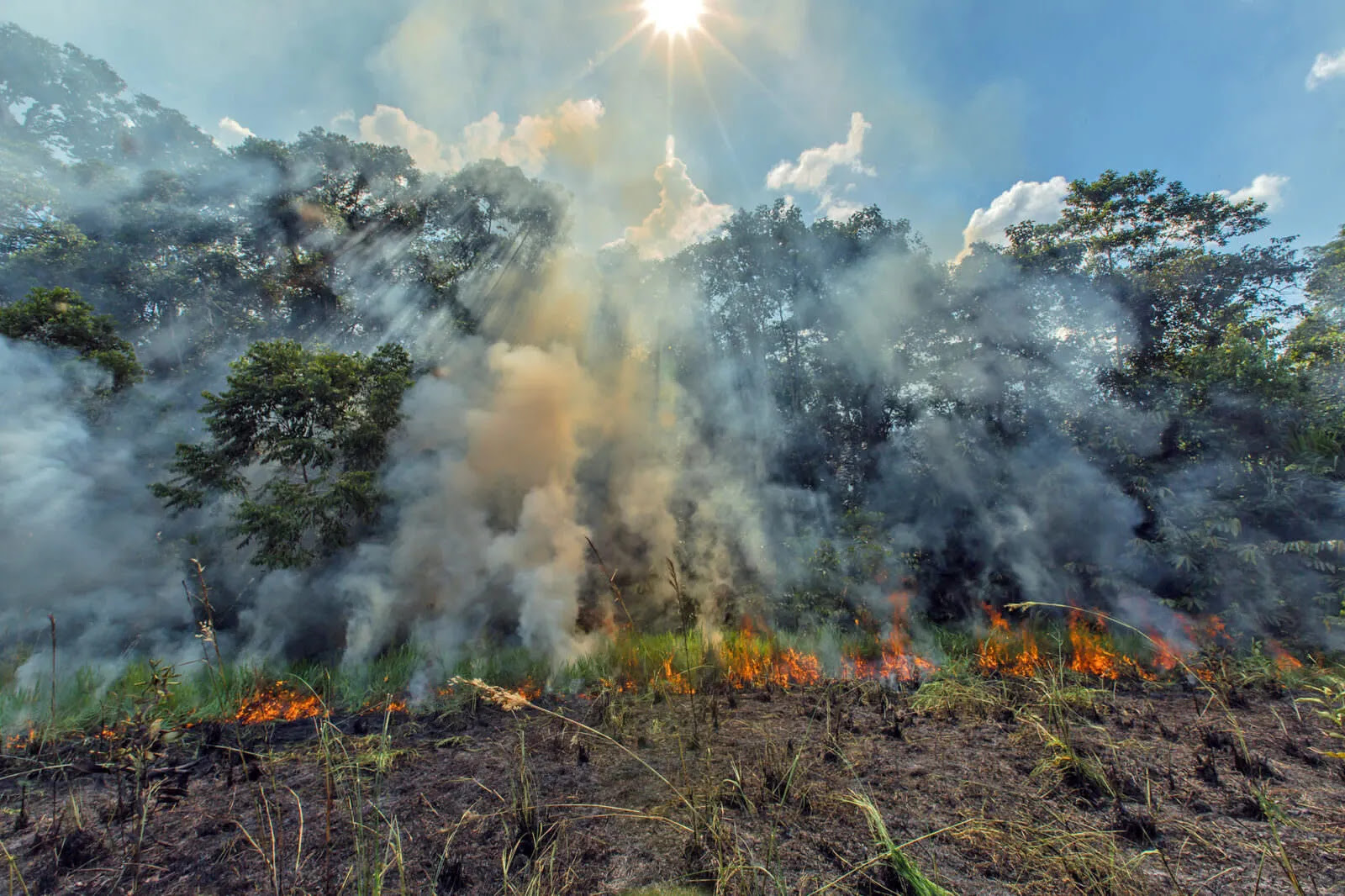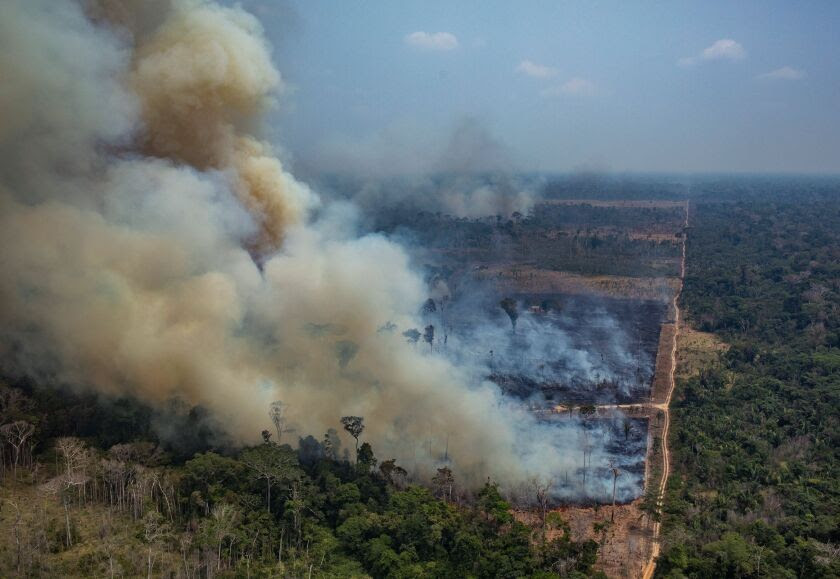The bird is a forked-tailed kite, a bird of prey with a swallow-like tail.
This event is taking place in the state of Rondonia (north), one of the most affected by forest fires, in an Amazon that has never burned so much in August for 12 years, with 18% more fires than in the same period last year.
The most affected area is located at the junction of three northern states, Amazonas, Acre and Rondonia, on the part of their respective territories.
This region is as big as California, known as Amacro, an acronym for these three border states, whose authorities launched a controversial “sustainable development zone” project last year with the support of the federal government of President Jair Bolsonaro.
Greenpeace said that despite the name, it is primarily about “boosting agricultural production” in the region, which is home to about 1.8 million people.
“It is the new frontier of deforestation,” insists Romulo Batista, a Greenpeace spokesman with whom an AFP team flew over the region.
The sector has “concentrated 40% of the fires identified since the beginning of the year in the Brazilian Amazon”, he stresses.
In some parts, the smoke is so thick that the pilot’s visibility is minimal. The smell of burning is almost unbearable.
In the areas that have already been destroyed, a landscape of desolation as far as the eye can see, with whole sections of ground black or dark grey, instead of the thick blanket of emerald green vegetation.
And in the ones still burning, the flames spread out in foci a few dozen meters apart, acting as ominous headlights in the middle of the smoke cloud.
At night, seen from above, the fires look like miniature volcanoes in eruption.
This August has been challenging for the inhabitants of Porto Velho, the capital of the state of Rondonia.

“I feel like there was three times more smoke than last year. It’s harmful, especially for children with respiratory problems,” said Francisco Alan Ferreira da Silva, a 33-year-old driver.
“It’s horrible; there’s a huge fog in the morning, the sun is all red, and it’s boiling. And when you open the window, you can see ash particles coming into the room,” adds Joyce Milena, a 24-year-old administrative assistant.
Deforestation and forest fires have increased dramatically under President Bolsonaro, who is up for re-election in a month.
Since he took office in January 2019, the average annual deforestation in the Brazilian Amazon has increased by 75% compared to the previous decade.
He dismisses the criticism by arguing that Brazil “preserves its forests much better than Europe,” referring to the fires ravaging France and Spain this summer.



Comment here